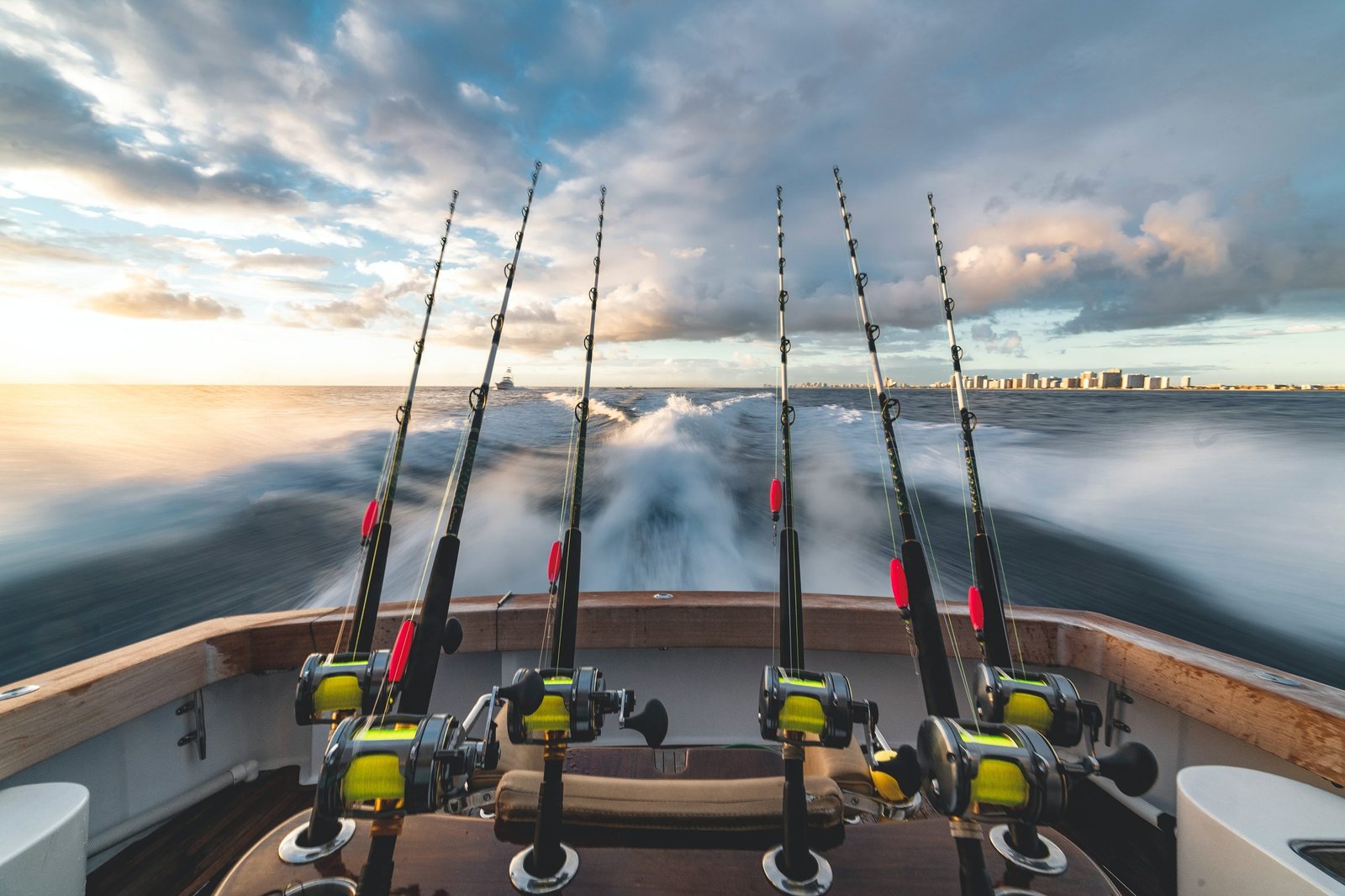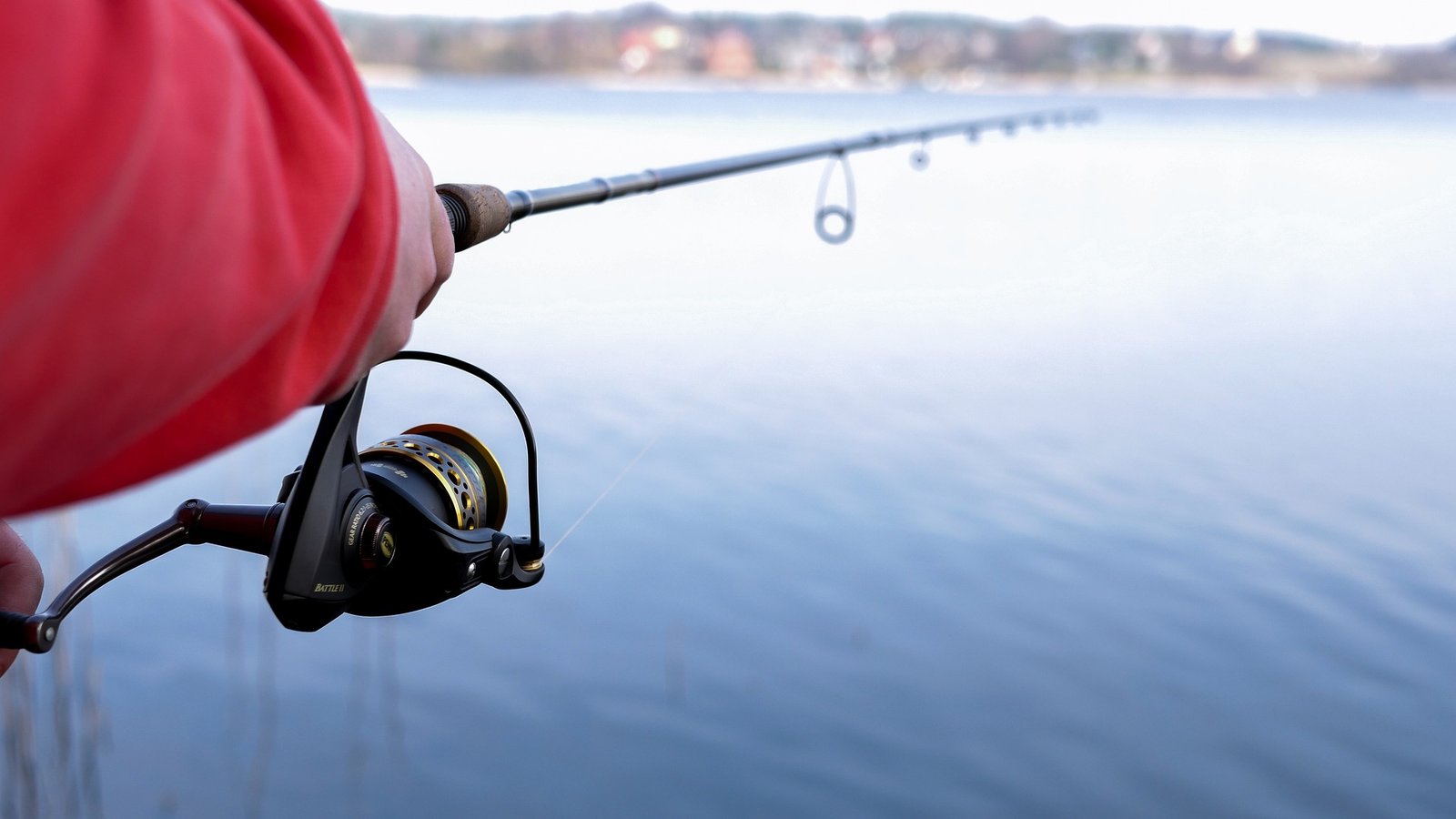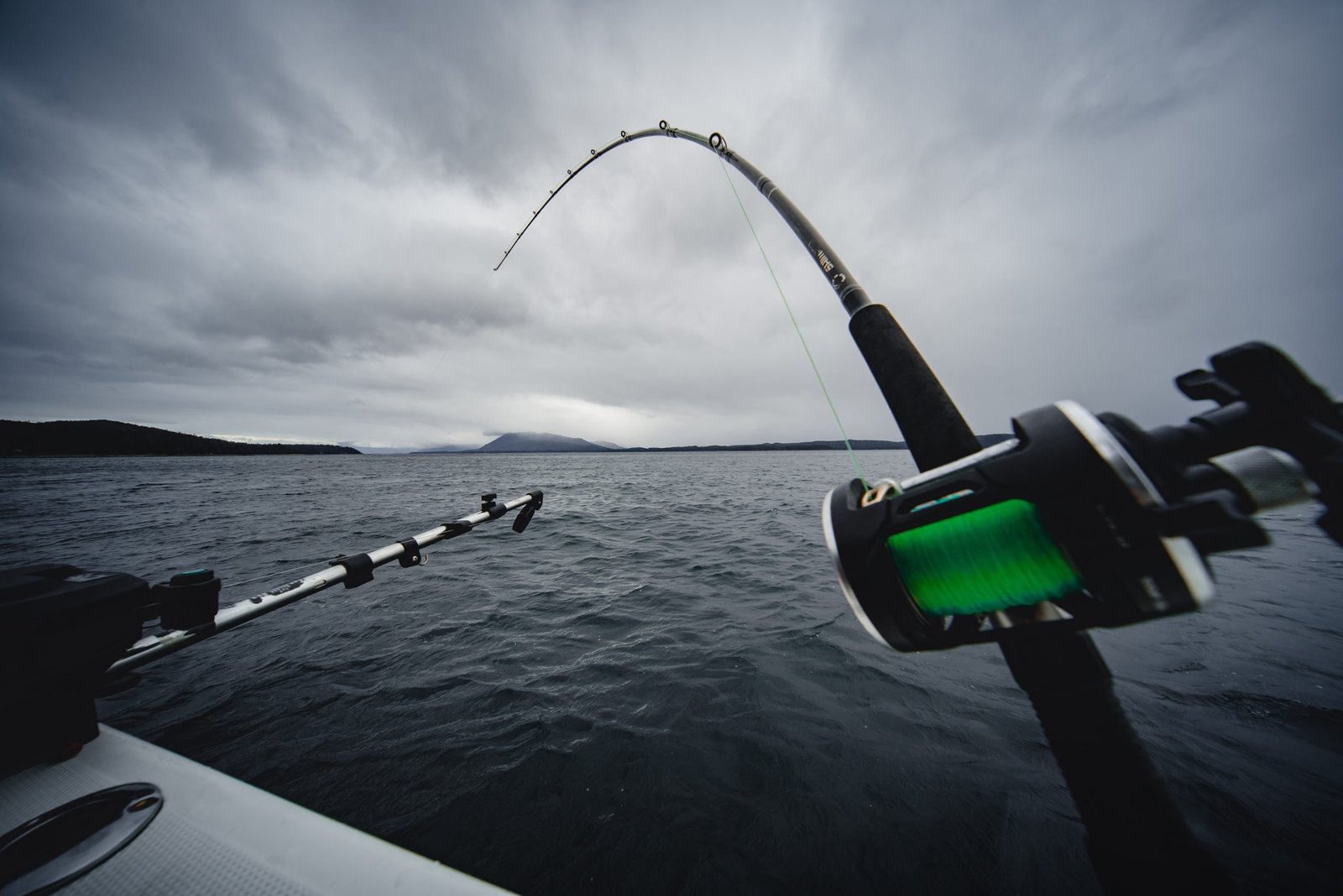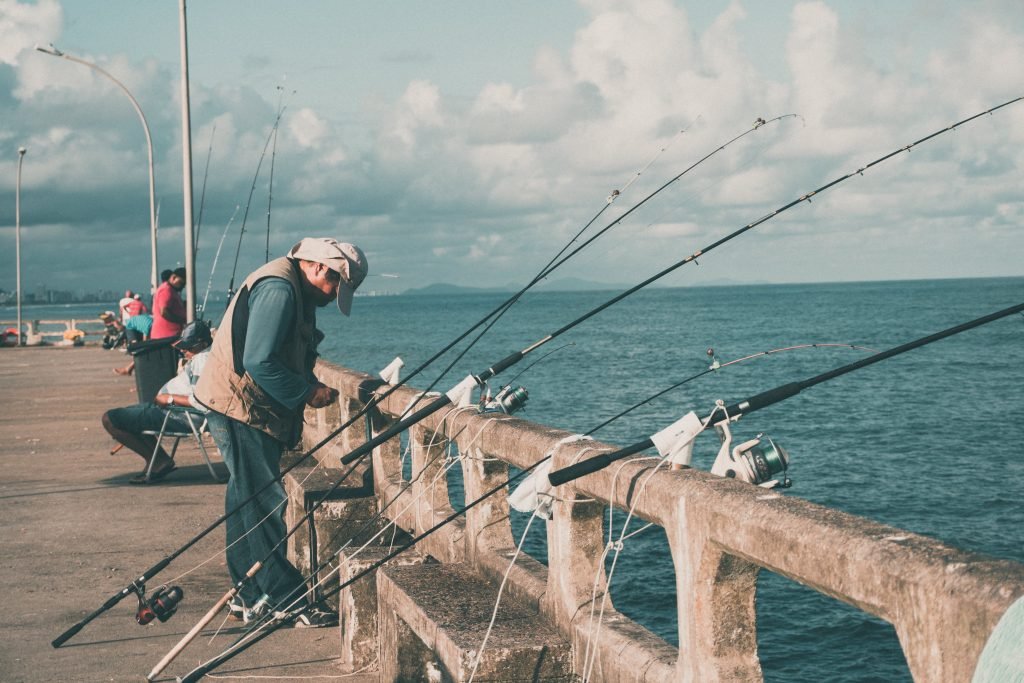
If you’re looking to go pier fishing, you’ll want to make sure you have the right gear, and that includes the right fishing rod.
Pier fishing rods need to be strong enough to handle the larger fish that live in deeper water, while also being sensitive enough to detect when a fish is biting. Also, they should be durable enough to withstand the harsh saltwater environment and lift fish on the pier.
In this article, we’ll take a look at some of the best fishing rods for pier fishing, based on personal experience and customer feedback. I’ll cover a range of options, from budget-friendly rods to high-end models, so you can find the right rod for your needs and budget. Whether you’re a seasoned pier angler or just starting out, I’ve got you covered.
Pier Fishing Essentials

Pier fishing is one of the most popular forms of saltwater fishing. It involves fishing from a pier or dock in the ocean, bay, or other bodies of saltwater. Pier fishing is a great way to catch a variety of fish species, including snook, redfish, tarpon, and more.
Here are a few things you need to know to get started with pier fishing:
Choose the Right Rod
When it comes to pier fishing, choosing the right fishing rod is crucial. You need a rod that is long enough to cast your bait out a good distance, but also strong enough to handle the weight of the fish you are targeting.
Look for a rod that is at least 7 feet long and has a medium-heavy power rating. This will give you the strength and sensitivity you need to catch a variety of fish species.
Understand the Tides
Tides play a crucial role in pier fishing. Understanding the tides can help you determine when the fish will be feeding and where they will be located.
Generally, the best time to fish is during the incoming tide, when the water is moving towards the shore. This is when the fish will be feeding on baitfish that are being pushed towards the shore by the current.
Using the Right Bait
Using the right bait is also important when pier fishing. Live bait is often the best option, as it will attract a variety of fish species. Some of the best live baits for pier fishing include shrimp, crabs, and small fish like mullet or sardines.
You can also use artificial lures like jigs or spoons, but live bait is often more effective.
Fishing Tips
Here are a few tips to help you catch more fish when pier fishing:
- Use a fish finder to locate schools of fish.
- Cast your bait out as far as possible.
- Keep your bait moving to attract more fish.
- Try to use a lighter line for a more natural bait appearance. How light you go depends on your target species and preference.
- Be patient and wait for the fish to come to you.
If you have the right equipment and follow some of these tips, I can assure you that you will catch more fish on piers.
Key Factors to Consider
Here is a list of the most important rod features:
- Material: two of the best materials are fiberglass and graphite. Fiberglass is a more affordable option, known for durability and flexibility. Graphite is more expensive but is lighter and more sensitive, making it an excellent choice for pier fishing.
- Length: most pier rods range from 7 to 10 feet in length. A longer rod will allow you to cast further out into the water, while a shorter rod will give you more control over your line. Consider the size of the pier you will be fishing from and the type of fish you are targeting, so you can make the perfect choice for you.
- Action: a medium action rod is optimal, as it provides balance between fast and slow action.
- Sensitivity: a more sensitive rod will allow you to feel even the slightest nibble on your line, while a less sensitive rod may cause you to miss bites. For smaller fish, you should get a more sensitive rod.
With this information, you can make sure that you’re choosing a rod that fits this style of fishing.
Top Picks and Reviews
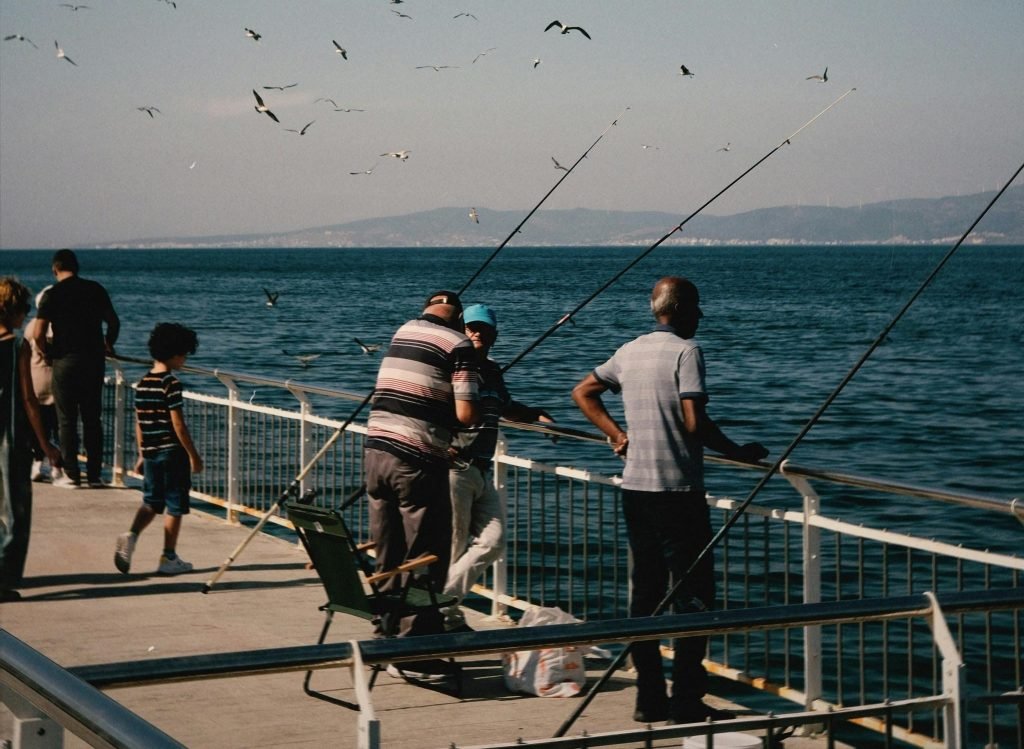
If you are looking for the best fishing rods for pier fishing, look no further. I have researched and tested the top rods on the market to bring you our top picks.
Ugly Stik GX2
))/3766742.json)
The Ugly Stik GX2 is an excellent choice for pier fishing, offering a blend of durability, sensitivity, and affordability. This rod is renowned for its robust construction, featuring a combination of graphite and fiberglass that ensures it can withstand the rigors of saltwater environments and the stress of catching larger fish. The clear tip design enhances sensitivity, allowing anglers to detect even the slightest nibbles.
You’ll appreciate its versatility, as it performs well with a variety of fish species commonly found around piers, such as drum, snapper, and bluefish. The rod’s medium power and moderate action provide a balanced feel, making it suitable for both beginners and experienced anglers. Additionally, the Ugly Stik GX2 is available in various lengths, with the 7-foot version being particularly popular for its balance of casting distance and control.
Check price on:
Penn Battalion II Inshore Spinning Rod
))/2911999.json)
The Penn Battalion II Spinning Rod is a top-tier choice for pier fishing, combining strength, sensitivity, and versatility. Designed specifically for inshore and pier fishing, this rod boasts a lightweight yet robust construction, thanks to its graphite composite blank. This ensures durability while maintaining a comfortable weight, making it easy to handle during long fishing sessions.
You’ll appreciate the rod’s excellent sensitivity, which allows for precise detection of bites, crucial when targeting species like flounder, redfish, and striped bass. The Battalion II’s stainless steel guides with aluminum oxide inserts enhance line performance and reduce friction, contributing to smoother casts and retrieves.
The ergonomic design features a comfortable, non-slip handle, providing a secure grip even when wet. Available in various lengths and power ratings, the Penn Battalion II caters to different fishing styles and preferences.
Check prices on:
Shimano Teramar Southeast Spinning Rod
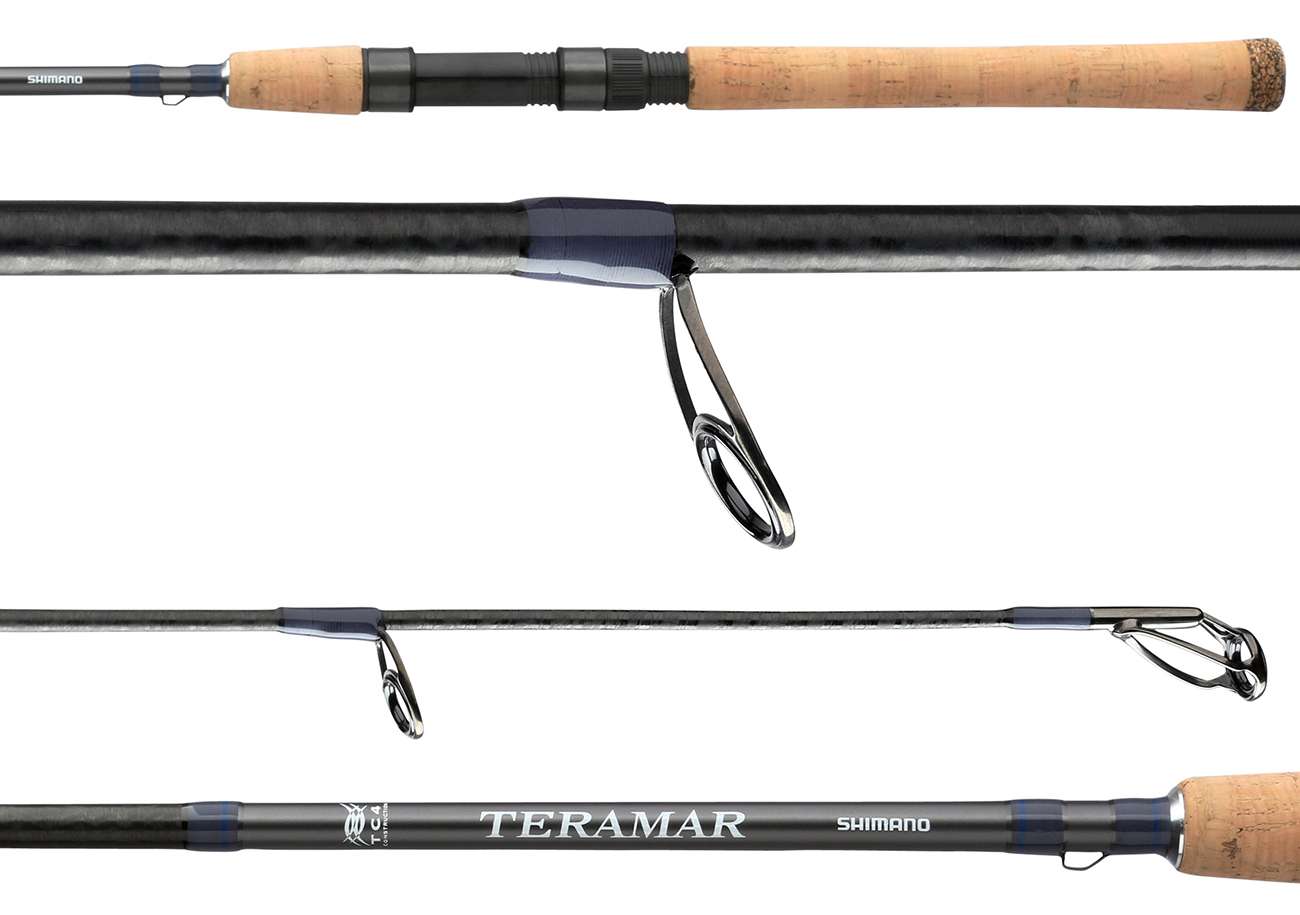
The Shimano Teramar Southeast Spinning Rod is a standout option for pier fishing, celebrated for its superior craftsmanship and performance. Designed with the demands of inshore and pier fishing in mind, this rod features a high-quality TC4 blank construction, which combines strength and sensitivity. This ensures that anglers can feel even the slightest bites while having the power to handle larger fish like snook, redfish, and trout.
The rod is equipped with Fuji guides and reel seats, which are known for their durability and smooth line management, reducing friction and enhancing casting distance. The cork handle provides a comfortable and secure grip, even in wet conditions, making it ideal for long fishing sessions.
Anglers appreciate the Shimano Teramar Southeast for its versatility and reliability. It is available in various lengths and power ratings, allowing for customization based on specific fishing needs. Overall, this rod offers excellent value, making it a top choice for serious pier fishing enthusiasts.
Check prices on:
Daiwa Coastal Salt Pro

The Daiwa Coastal SP Surf Rod is a versatile and powerful option for pier fishing, designed to meet the demands of both surf and pier anglers. This rod is built with a high-quality graphite blank, offering a perfect balance of strength and sensitivity. Its design allows for long, accurate casts, which is particularly beneficial when fishing from piers where reaching distant fish is often necessary.
Equipped with low rider guides, the Coastal SP ensures smooth line flow, reducing friction and enhancing casting performance. The rod’s fast action and medium-heavy power make it suitable for targeting a variety of species, including striped bass, bluefish, and red drum. The shrink wrap handle provides a comfortable and secure grip, even when wet.
Check prices on:
Okuma Cedros A

The Okuma Cedros “A” Spinning Rod is an exceptional choice for pier fishing, designed specifically for saltwater environments. This rod features E-glass blank construction, providing unparalleled strength and durability, essential for handling the powerful runs of larger fish often encountered around piers. Its robust build does not compromise sensitivity, allowing anglers to detect even subtle bites.
The Cedros “A” is equipped with ALPS stainless steel double footed guides with zirconium inserts, which are highly resistant to corrosion and offer smooth line flow, enhancing casting distance and accuracy. The rod’s split EVA handle design ensures a comfortable and secure grip, even during extended fishing sessions.
Check Price on:
No matter which rod you choose, make sure it is the right length and power rating for the type of fish you are targeting.
Best Fishing Rods for Different Species

Here I will show you how to choose a rod based on your target species:
Redfish
Redfish are a popular species to catch while pier fishing. To catch them, you’ll need a medium-heavy to heavy action rod with a fast tip. Look for a rod that’s at least 7 feet long, as this will give you the casting distance you need to reach redfish that are swimming further away from the pier.
Tarpon
Tarpon are a challenging species to catch, but they’re also one of the most rewarding. To catch them, you’ll need a heavy action rod with a fast tip. Look for a rod that’s at least 8 feet long, as this will give you the leverage you need to fight these powerful fish.
Flounder
Flounder are a popular species to catch while pier fishing, but they can be tricky to reel in. To catch them, you’ll need a light to medium action rod with a sensitive tip. Look for a rod that’s at least 6 feet long, as this will give you the sensitivity you need to feel when a flounder bites.
Spanish Mackerel
Spanish mackerel are a fast and aggressive species that can be a lot of fun to catch. To catch them, you’ll need a medium action rod with a fast tip. Look for a rod that’s at least 7 feet long, as this will give you the casting distance you need to reach these speedy fish.
Pompano
Pompano are a popular species to catch, but they can be difficult to hook. To catch them, you’ll need a light to medium action rod with a sensitive tip. Look for a rod that’s at least 6 feet long, as this will give you the sensitivity you need to feel when a pompano bites.
By using the right rod for the job, you’ll increase your chances of catching your target species and having a successful day on the pier.
Frequently Asked Questions
What is the ideal length for a pier fishing rod?
The ideal length for a pier fishing rod is around 7 to 10 feet. This length allows you to cast your line far enough from the pier, while still giving you enough control over your bait. Longer rods can be more difficult to handle and may not be suitable for all anglers.
What are some affordable options for pier fishing rods?
If you’re looking for an affordable pier fishing rod, the Shakespeare Ugly Stik GX2 is a great option. It’s durable, lightweight, and has a sensitive tip that allows you to feel even the lightest bites. Another affordable option is the Okuma Longitude Surf Graphite Rod.
What are the advantages of using a PENN pier fishing rod?
PENN pier fishing rods are known for their strength and durability. They are designed to handle heavy fish and rough conditions, making them a great choice for pier fishing. Additionally, PENN rods are known for their sensitivity, which allows you to feel even the slightest bites.
What are the benefits of using a Shimano Trevala spinning rod for pier fishing?
The Shimano Trevala spinning rod is a great choice for pier fishing because it’s lightweight, sensitive, and has a fast action. This allows you to feel even the slightest bites and quickly set the hook. Additionally, the Trevala’s fast action allows you to cast your line further from the pier.
What pound test line is recommended for pier fishing?
The pound test line you should use for pier fishing depends on the type of fish you’re targeting. For smaller fish, a 10-15 pound test line should be sufficient. For larger fish, you may need to use a 20-30 pound test line.
What is the best setup for pier fishing from a pier?
The best setup for pier fishing from a pier is a 7 to 10-foot rod paired with a spinning reel. You should also use a leader and a weight that’s heavy enough to keep your bait close to the bottom. Additionally, it’s important to use the right bait for the type of fish you’re targeting.

